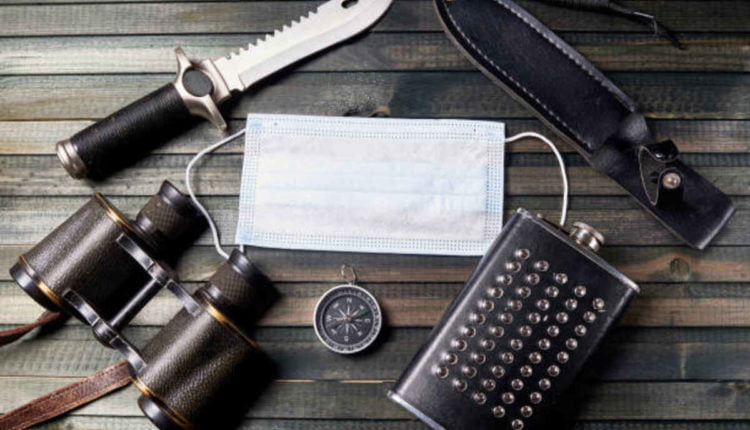An emergency survival kit list is an indispensable asset to anyone who seeks to be prepared. But to make the most out of it, gear should be tailored specifically for each location, climate, and hiking party size – and tailored accordingly! bugout bag
Practice using your gear, including using fire-starting tools such as flint and steel or matches, will enable you to feel more at ease under stressful conditions.
Food
Food is an integral component of a survival kit, serving as fuel to sustain physical strength and well-being in emergencies. According to government recommendations, three days’ worth of nonperishable food and water supplies should be kept on hand just in case something forces evacuation or makes supermarkets unavailable as sources of nourishment.
Foods that do not require cooking are ideal as they can be enjoyed cold or warm and will keep for an extended period. Your kit could include items such as granola, nuts, dried fruit, protein bars, and jerky; additionally, consider having a manual can opener and eating utensils as necessary. Also, remember to include food appropriate to any special dietary requirements within your family.
Your survival kit must contain water; according to government advice, each member of the household should store at least two weeks’ supply in an easily transportable bottle or can. Bottled water offers more shelf life than tap, though its transport may be cumbersome; therefore, portable methods of treating water should also be added for easy carrying and use.
Water
If a natural disaster strikes, power, water, and other essential services could be interrupted, making survival necessary. Every household should store enough supplies to support at least 7-10 days of survival in case any disaster strikes.
Water is a clear, colorless liquid composed of two hydrogen atoms covalently bound to one oxygen atom. This gives water some unique properties: it attracts cations while repelling anions.
Water can dissolve many materials; in fact, it serves as the primary solvent in our bodies and cells. Furthermore, it’s highly versatile with numerous applications.
Water is essential to survival kits, and one way to prepare is by stockpiling an adequate supply in an easily transportable container. Look for 33-gallon plastic trash barrels or stackable containers with lids at local hardware and big box stores for this task – some even come equipped with handles and wheels so you can transport your containers easily during an emergency.
Shelter
The shelter is one of the basic requirements for survival, whether that means having a tarp or poncho handy or packing a backpacking tent into your emergency kit – having this equipment could mean the difference between being comfortable in an emergency scenario and being miserable.
Survival kits often include additional, less versatile items that may take up valuable space; these may prove essential in some situations.
Extra items could include a military tarp or poncho, a flashlight with extra batteries, a hand-cranked or battery-powered radio to stay informed about potentially hazardous areas, a hidden safe for valuables and documents, or a baseball bat (like Cold Steel Brooklyn Smasher) as a form of self-defense, blankets for extra warmth in freezing weather and additional OTC medication as well as any medical supplies may all come in handy during emergencies.
First Aid
Cleaning wounds and treating them effectively are essential elements of survival. Be prepared by stocking hand sanitizer, iodine tablets, insect bite wipes, antibiotic creams, moleskin, and heavy-duty EMT-style shears in order to quickly cut bandages, clothes, or materials for use as improvised medical devices like tourniquets. In addition, keep gloves, compass signal mirrors, and flares handy.
This kit stands out as being one of the most well-stocked at its size and price, which led to it becoming our Best Overall pick. It includes two tube tents, ponchos, emergency blankets, and plenty of paracords – as well as a quality ferro rod and sharp knife to use with it – in our review. In addition, there’s even a metal whistle with a loud yet consistent sound, as well as a crank radio/flashlight capable of picking up weather stations!
This survival kit boasts an abundance of food and water compared to others we reviewed, with four 2,400-calorie Datrex ration bars and 24 packets of emergency Datrex water for an approximate daily supply of fluids for one person. In addition, it includes a Sawyer Mini water filter, a multitool, and a pair of tweezers (although there is no CPR face shield).
Communication
Under certain disaster circumstances, being forced to survive alone for days after leaving your home or shelter may be necessary. Having an emergency supply kit in your car, home, and workplace could be essential.
Your survival kit should include essential tools that will allow you to survive for at least 72 hours in case of evacuation, power outage, or other emergency. These may consist of food and water supplies, first aid supplies, battery-operated lights or flashlights, wind-up radios with batteries included and emergency contact numbers, and copies of important documents like insurance policies, as well as supplies of pet food and water for three days for those who own pets. Furthermore, means of communication, such as satellite phones or walkie-talkies, may be helpful.
Consider updating your survival kit regularly, taking into account changing weather patterns, outdoor technology advances, and family information updates that may necessitate modifications. Plan regular review meetings on your calendar or in a family notebook.


